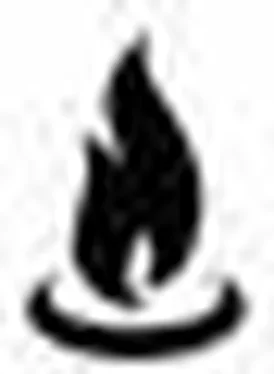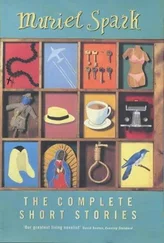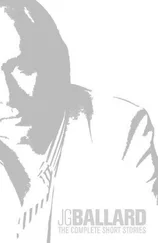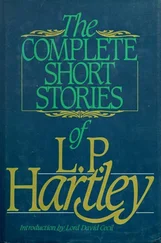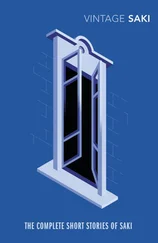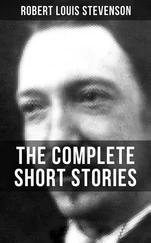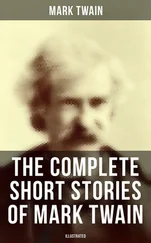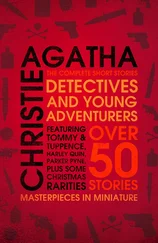Ernest Hemingway - Complete Short Stories Of Ernest Hemingway, The
Здесь есть возможность читать онлайн «Ernest Hemingway - Complete Short Stories Of Ernest Hemingway, The» весь текст электронной книги совершенно бесплатно (целиком полную версию без сокращений). В некоторых случаях можно слушать аудио, скачать через торрент в формате fb2 и присутствует краткое содержание. Год выпуска: 2007, Издательство: Scribner, Жанр: Старинная литература, на английском языке. Описание произведения, (предисловие) а так же отзывы посетителей доступны на портале библиотеки ЛибКат.
- Название:Complete Short Stories Of Ernest Hemingway, The
- Автор:
- Издательство:Scribner
- Жанр:
- Год:2007
- ISBN:нет данных
- Рейтинг книги:5 / 5. Голосов: 1
-
Избранное:Добавить в избранное
- Отзывы:
-
Ваша оценка:
- 100
- 1
- 2
- 3
- 4
- 5
Complete Short Stories Of Ernest Hemingway, The: краткое содержание, описание и аннотация
Предлагаем к чтению аннотацию, описание, краткое содержание или предисловие (зависит от того, что написал сам автор книги «Complete Short Stories Of Ernest Hemingway, The»). Если вы не нашли необходимую информацию о книге — напишите в комментариях, мы постараемся отыскать её.
Complete Short Stories Of Ernest Hemingway, The — читать онлайн бесплатно полную книгу (весь текст) целиком
Ниже представлен текст книги, разбитый по страницам. Система сохранения места последней прочитанной страницы, позволяет с удобством читать онлайн бесплатно книгу «Complete Short Stories Of Ernest Hemingway, The», без необходимости каждый раз заново искать на чём Вы остановились. Поставьте закладку, и сможете в любой момент перейти на страницу, на которой закончили чтение.
Интервал:
Закладка:
Vigía in Spanish means a lookout or a prospect. The farmhouse is built on a hill that commands an unobstructed view of Havana and the coastal plain to the north. There is nothing African or even continental about this view to the north. It is a Creole island view of the sort made familiar by the tropical watercolors of Winslow Homer, with royal palms, blue sky, and the small, white cumulus clouds that continuously change in shape and size at the top of the shallow northeast trade wind, the brisa .
In the late summer, when the doldrums, following the sun, move north, there are often, as the heat builds in the afternoons, spectacular thunderstorms that relieve for a while the humid heat, chubascos that form inland to the south and move northward out to the sea.
In some summers, a hurricane or two would cut swaths through the shack houses of the poor on the island. Hurricane victims, damnificados del ciclón , would then add a new tension to local politics, already taut enough under the strain of insufficient municipal water supplies, perceived outrages to national honor like the luridly reported urination on the monument to José Marti by drunken American servicemen and, always, the price of sugar.
Lightning must still strike the house many times each summer, and when we were children there no one would use the telephone during a thunderstorm after the time Papa was hurled to the floor in the middle of a call, himself and the whole room glowing in the blue light of Saint Elmo’s fire.
During the early years at the finca , Papa did not appear to write any fiction at all. He wrote many letters, of course, and in one of them he says that it is his turn to rest. Let the world get on with the mess it had gotten itself into.
Marty was the one who seemed to write and to have kept her taste for the high excitement of their life together in Madrid during the last period of the Spanish Civil War. Papa and she played a lot of tennis with each other on the clay court down by the swimming pool and there were often tennis parties with their friends among the Basque professional jai alai players from the fronton in Havana. One of these was what the young girls today would call a hunk, and Marty flirted with him a little and Papa spoke of his rival, whom he would now and again beat at tennis by the lowest form of cunning expressed in spins and chops and lobs against the towering but uncontrolled honest strength of the rival.
It was all great fun for us, the deep-sea fishing on the Pilar that Gregorio Fuentes, the mate, kept always ready for use in the little fishing harbor of Cojimar, the live pigeon shooting at the Club de Cazadores del Cerro, the trips into Havana for drinks at the Floridita and to buy The Illustrated London News with its detailed drawings of the war so far away in Europe.
Papa, who was always very good at that sort of thing, suggested a quotation from Turgenev to Marty: “The heart of another is a dark forest,” and she used part of it for the title of a work of fiction she had just completed at the time.
Although the Finca Vigía collection contains all the stories that appeared in the first comprehensive collection of Papa’s short stories published in 1938, those stories are now well known. Much of this collection’s interest to the reader will no doubt be in the stories that were written or only came to light after he came to live at the Finca Vigía.
—JOHN, PATRICK, AND GREGORY HEMINGWAY 1987
Publisher’s Preface
THERE HAS LONG BEEN A NEED FOR A complete and up-to-date edition of the short stories of Ernest Hemingway. Until now the only such volume was the omnibus collection of the first forty-nine stories published in 1938 together with Hemingway’s play The Fifth Column . That was a fertile period of Hemingway’s writing and a number of stories based on his experiences in Cuba and Spain were appearing in magazines, but too late to have been included in “The First Forty-nine.”
In 1939 Hemingway was already considering a new collection of stories that would take its place beside the earlier books In Our Time, Men Without Women , and Winner Take Nothing . On February 7 he wrote from his home in Key West to his editor Maxwell Perkins at Scribners suggesting such a book. At that time he had already completed five stories: “The Denunciation,” “The Butterfly and the Tank,” “Night Before Battle,” “Nobody Ever Dies,” and “Landscape with Figures,” which is published here for the first time. A sixth story, “Under the Ridge,” would appear shortly in the March 1939 edition of Cosmopolitan .
As it turned out, Hemingway’s plans for that new book did not pan out. He had committed himself to writing three “very long” stories to round out the collection (two dealing with battles in the Spanish Civil War and one about the Cuban fisherman who fought a swordfish for four days and four nights only to lose it to sharks). But once Hemingway got underway on his novel—later published as For Whom the Bell Tolls —all other writing projects were laid aside. We can only speculate on the two war stories he abandoned, but it is probable that much of what they might have included found its way into the novel. As for the story of the Cuban fisherman, he did eventually return to it thirteen years later when he developed and transformed it into his famous novella, The Old Man and the Sea .
Many of Hemingway’s early stories are set in northern Michigan, where his family owned a cottage on Waloon Lake and where he spent his summers as a boy and youth. The group of friends he made there, including the Indians who lived nearby, are doubtless represented in various stories, and some of the episodes are probably based at least partly on fact. Hemingway’s aim was to convey vividly and exactly moments of exquisite importance and poignancy, experiences that might appropriately be described as “epiphanies.” The posthumously published “Summer People” and the fragment called “The Last Good Country” stem from this period.
Later stories, also set in America, relate to Hemingway’s experiences as a husband and father, and even as a hospital patient. The cast of characters and the variety of themes became as diversified as the author’s own life. One special source of material was his life in Key West, where he lived in the twenties and thirties. His encounters with the sea on his fishing boat Pilar , taken together with his circle of friends, were the inspiration of some of his best writing. The two Harry Morgan stories, “One Trip Across” ( Cosmopolitan , May 1934) and “The Tradesman’s Return” ( Esquire , February 1936), which draw from this period, were ultimately incorporated into the novel To Have and Have Not , but it is appropriate and enjoyable to read them as separate stories, as they first appeared.
Hemingway must have been one of the most perceptive travelers in the history of literature, and his stories taken as a whole present a world of experience. In 1918 he signed up for ambulance duty in Italy as a member of an American Field Service unit. It was his first transatlantic journey and he was eighteen at the time. On the day of his arrival in Milan a munitions factory blew up, and with the other volunteers in his contingent Hemingway was assigned to gather up the remains of the dead. Only three months later he was badly wounded in both legs and hospitalized in the American Red Cross hospital in Milan, with subsequent outpatient treatment. These wartime experiences, including the people he met, provided many details for his novel of World War I, A Farewell to Arms . They also inspired five short story masterpieces.
In the 1920s he revisited Italy several times; sometimes as a professional journalist and sometimes for pleasure. His short story about a motor trip with a friend through Mussolini’s Italy, “Che Ti Dice La Patria?,” succeeds in conveying the harsh atmosphere of a totalitarian regime.
Читать дальшеИнтервал:
Закладка:
Похожие книги на «Complete Short Stories Of Ernest Hemingway, The»
Представляем Вашему вниманию похожие книги на «Complete Short Stories Of Ernest Hemingway, The» списком для выбора. Мы отобрали схожую по названию и смыслу литературу в надежде предоставить читателям больше вариантов отыскать новые, интересные, ещё непрочитанные произведения.
Обсуждение, отзывы о книге «Complete Short Stories Of Ernest Hemingway, The» и просто собственные мнения читателей. Оставьте ваши комментарии, напишите, что Вы думаете о произведении, его смысле или главных героях. Укажите что конкретно понравилось, а что нет, и почему Вы так считаете.
